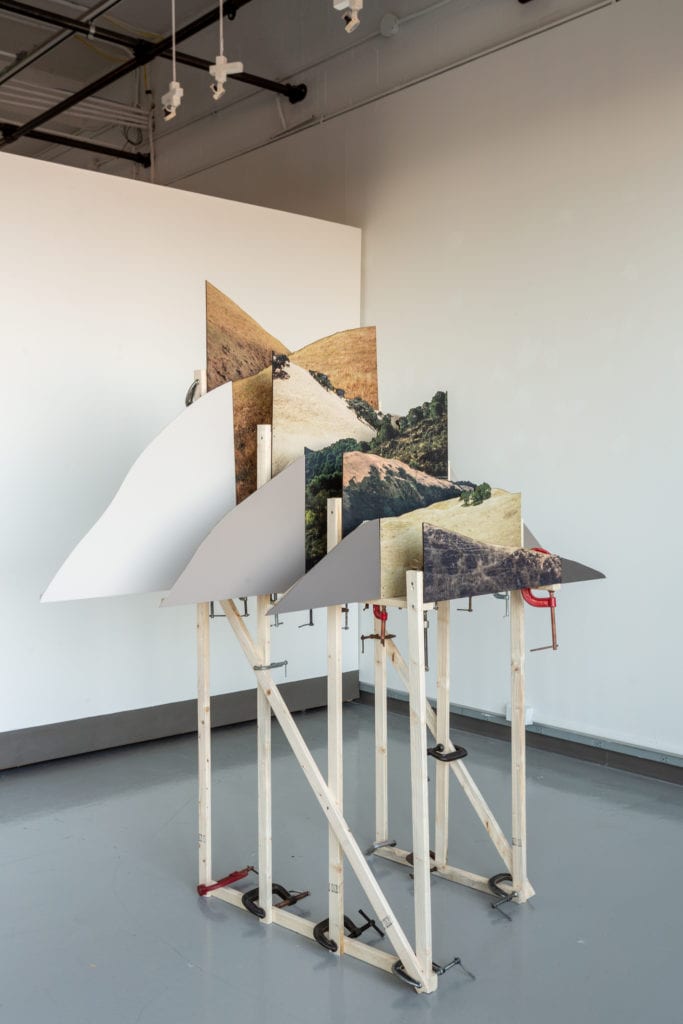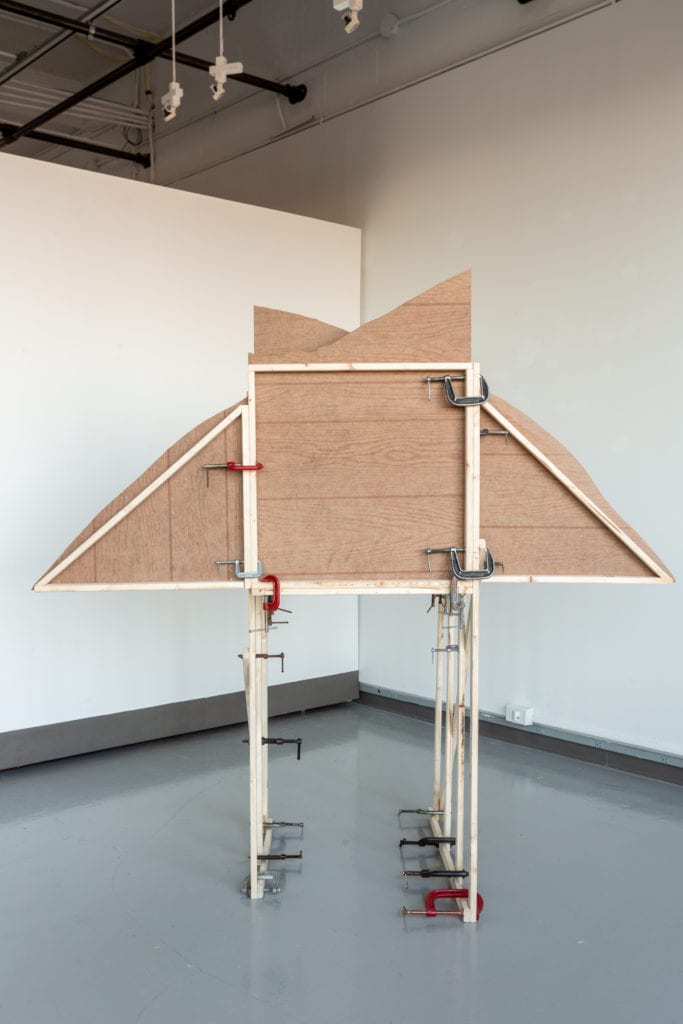My great-grandmother was a smuggler. She would carry chicken eggs tucked into her stockings across the border from the Alentejo region of southern Portugal to war-torn Andalusia. She would hike through the hills outside of town under the harsh sun of the Iberian chaparral to avoid the border guards. She would stop to rest under a broad oak tree and would listen to the drone of a million cicadas, before marching on to a whitewashed village beyond an imaginary line. Only the bars on the windows of the homes there might indicate she was in Spain. They were meant to keep out the advancing nationalist armies.

Some eighty years later, stories like this one, both foreign and familiar, haunt my latest project Dog Days on the Chaparral. These stories are set in the Portuguese Montado landscape, which along with the Spanish Dehesa, form an ancient cultural landscape and agroforestry system characterized by a chaparral biome (think Ferdinand the Bull sitting under his oak tree). These stories have guided me as I scout for locations in the landscape, and when I go back today, I find glimpses of the inherited memories of such stories in those hills and valleys. Coincidentally, my family settled in a region of California with very similar geography, climate, flora, and fauna. Just outside my parents’ front door in San Jose is the oak-dotted Diablo Range, where I spent my teenage years cycling through places like Joseph D. Grant County Park, Alum Rock Park, and Mission Peak Regional Preserve. Beyond these hills are the California Central Valley and my uncle’s dairy farm. The view of the wind turbines that dotted the rolling hills of Altamont Pass was a sure sign that we had almost reached his home. The uncanny continuity between these hills and the Alentejo startles me even today. They merge in these sculptures to represent a distinct sense of home.
Having grown up between these two places and cultures, I have a slippery relationship with them. My conception of both countries and my relationship to them has been pieced together idiosyncratically from stories, trips, and interactions with family, friends, and neighbors. Consequently, although I define myself as both Portuguese and American, my identification as either ebbs and flows—neither culture feels fully native. Neither English nor Portuguese allows me sufficient expression, and homesickness is ever-present. Dog Days on the Chaparral seeks to capture this slipperiness, this complicated emotional geography. In making collages that combine photographs of the California chaparral and Portuguese Montado—proxies for these two homes and identities—I seek to fabricate a landscape where I feel grounded as the equivalent of a natural landscape. In combining common elements from my countries of origin and adoption in landscape images, I am claiming that this emotionally-bounded place is as natural as any physically-bounded one. My landscape works are the product of an internal dialog regarding where I belong, and like all landscape images, ask the viewer to think about where they, too, belong.



To make these sculptures, I draw from a toolbox of skills, processes, and materials that I have assembled over a lifetime. I use vernacular building materials and fabrication techniques—skills I learned working alongside my father and uncles. My images and materials are saturated with personal meaning and modulate each other to communicate ideas more complex than the sum of their parts. Dog Days employs lumber, engineered wood, house paint, fasteners, and clamps to give sculptural dimension to photographs, while also reflecting the Sisyphean efforts made to collage together a sense of home and belonging without much guidance as I straddled two countries and cultures. The use of these skills and materials, alongside more mainstream photographic printing techniques, forms a hybrid approach, which speaks more clearly to who I am and why I make art.
The resulting photo objects are both visual and haptic and feature the strong presence of my hand. I’m cutting and reducing the landscape to its most essential horizons and planes and building it up again out of various materials into three-dimensional constructions. The camera bears witness to the real place, but my hand is central, present in my perception, interpretation, and transformation of the subject. My work might be compared to the contemporary tradition of fotoescultura. These photo objects, popular in Mexico, do more than portray a loved one. They create three-dimensional effigies which occupy the space in front of the viewer and dull the pain of their loss. To me, these sculptures are objects of affection, but fall short of being holy relics. They function as icons or shrines which solicit quiet contemplation of a place just beyond reach.



Dog Days offers an alternative approach to discussing the reality of immigration as an experience which continues long after the moment of migration. To this end, magical realism plays an outsized role in my work, both visually and thematically. This literary genre marries concrete situations with surreal elements and offers ways to discuss alternative approaches to reality that transgress geographical and political boundaries. In Dog Days, otherwise static and passive landscapes lift up and stack upon each other like so many sheets of paper. They become malleable and are shaped into a form that suits their inhabitants with no regard for these boundaries. The genre also empowers writers to furtively challenge the unquestioned beliefs that enable colonial, fascist, and other totalitarian regimes. Most inspirational to me were José Saramago’s novels, which reflect the rural poverty, fascist dictatorship, colonial wars, and revolution that characterized Portugal in the 1960s and 1970s and ultimately forced my family to migrate. The ferocious narratives of his novels washed away the pastel tones of my parents’ nostalgia for their country of birth. Dog Days eschews the nostalgia that so easily ensnares immigrants and their descendants and focuses instead on the long-term ramifications of migration, specifically the efforts made by migrants and their descendants to shape a home and cultural consciousness after the moment of migration.

In making these sculptures, I’ve become more aware of the physical, psychological, and emotional efforts of migrants in building a new home in their adopted countries. I want to inspire sympathy and hospitality in all who view this work. This narrative is not mine alone, but belongs to millions of displaced peoples around the world. Reflecting the overwhelming presence of this composite place in my own life, Dog Days on the Chaparral collages much more than images—it combines material, skillsets, and memory. As I fabricate these images, I’m shaping them into physical structures that pull these two poles closer together. As I move literally and figuratively through the spaces I’ve created, I finally feel at home among the hills, guarded by the shade of the oak trees, and blanketed by the drone of the cicadas.

About the artist
Hugo Teixeira grew up in the Luso-American community in San Jose, California. A linguist by training, he studied photography at San Jose State University and Lisbon’s Escola Técnica de Imagem e Comunicação and graduated from the MFA in Photography and Related Media program at Rochester Institute of Technology in 2020. His artwork relies on photography, common materials, advanced technical skillsets, and memory to create contemporary conceptual images and sculptures. As an artist and teacher, Hugo has exhibited work in the United States, Portugal, and the Macau Special Administrative Region of China.

